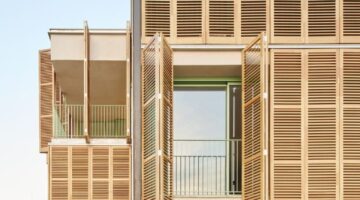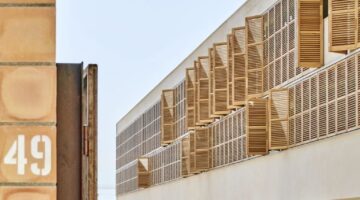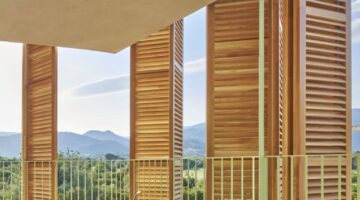







54 social housing in Inca, Mallorca, Spain
Main objectives of the project
The island of Mallorca, particularly the city of Inca, is facing a severe housing crisis due to a growing population and a shortage of affordable homes. Inca, historically an industrial hub known for prominent shoe brands like Lottuse and Camper, now struggles with both housing shortages and industrial decline. To address these challenges, the Balearic Housing Institute (IBAVI) has proposed a new housing development. This project aims to provide essential residential units while emphasizing sustainable and environmentally friendly construction practices, integrating the building seamlessly into the urban landscape and ensuring it meets the community's needs effectively.
Date
- 2022: Construction
Stakeholders
- Architect: Xavier Morell
- Architect: Marc Alventosa
- Architect: Joan Fortuny
Location
Country/Region: Spain
Description
The island of Mallorca, Spain, is grappling with a severe housing crisis, exacerbated by a growing population and a shortage of affordable homes. The city of Inca, once a thriving industrial hub and home to prominent shoe brands like Lottuse and Camper, is particularly affected. Inca now faces a dual challenge of a housing shortage and the economic decline of its industrial sector. In response, the Balearic Housing Institute (IBAVI) has proposed a new housing development aimed at alleviating this critical issue. This project not only seeks to provide much-needed residential units but also prioritizes sustainable and environmentally friendly construction practices.
The plot owned by IBAVI has a rectangular shape with an approximate area of 3,266 m². The proposed design focuses on two fundamental aspects: the proper integration of the building into the urban and physical environment, and a solution that synthesizes the functional aspects of the program. According to municipal regulations, the program includes underground parking, while the 54 housing units are distributed across 18 flats per floor on the ground floor and two upper floors. Within the interior space, there is a common area for residents to interact. The building is organized along a north-south axis, resulting in the creation of two independent volumes that form a public space between them.
Due to the significant unevenness of the land, the building is situated on the upper level, establishing an accessible route. The housing module is organized around a central wet core, dividing the space into two areas with double orientation. The arrangement of day and night areas varies by height to optimize sun exposure, ventilation, privacy, and views, thereby creating different types of housing on each floor. The residences feature outdoor spaces: private gardens on the ground floor and terraces on the upper floors.
The structural solution involves a system of reticular concrete slabs with large spans of 35 cm thick and metal pillars. The underground section is constructed with concrete retaining walls, and the foundation employs a system of deep foundations due to the expansive clays in the area. The façade comprises a double layer of local ceramic with recycled cotton insulation in the cavity, and the exterior is finished with sprayed cork and coarse lime, topped with a layer of fine lime with natural pigments. The exterior carpentry is made of aluminum with a thermal break, and solar protections are crafted from sustainably sourced Larch wood.
The roofs are flat, utilizing an inverted insulation and waterproofing system with recycled gravel. These roofs also support photovoltaic panels, aerothermal and recovery equipment, and ventilation ducts. Interior floors are made of locally sourced ceramic clay, fired with biomass. Facilities are minimized in bathroom areas, with only one ceiling present. Hot water is provided by a highly efficient "NUOS" aerothermal system. Housing ventilation is managed by heat recuperators that temper the air via community aerothermal systems. Community spaces on the ground floor are efficiently designed with concrete floors and permeable gravel pavements, promoting natural rainwater flow to the subsoil. The area is landscaped with Jacarandas, offering shade and enhancing the community space.
This innovative housing project reflects IBAVI's commitment to addressing Mallorca's housing crisis with sustainable solutions. The building's design and construction methods not only provide functional and comfortable living spaces but also prioritize environmental sustainability, energy efficiency, and the well-being of its residents.

